The best TVs for gaming on PS4 and Xbox
Best TVs for Gaming Buying Guide: Welcome to TechRadar's round-up of the best 4K TVs for PS4 and Xbox you can buy for any budget in 2018.
If you're a console gamer, finding the right TV can be a hassle. PC gamers have it easy - all they need to do is find a monitor with a 4K resolution and wickedly fast refresh rate and hit the buy button. Us console gamers have it tougher.
That said, nothing is impossible. No high score is too high and no achievement is locked forever. Just like every other challenge, you can conquer this, too.
The good news is that you have an ally on the field of battle - us! We're here to help you pick out the best 4K HDR TV that plays nicely with all your consoles, whether you're a member of PlayStation Nation with a PS4 and PS4 Pro, or an Xbox Elite and boast the Xbox One X or Xbox One S. Us console gamers gotta stick together.
Specc'd to win
So what exactly does a TV need to be able to do these days to unlock your full gaming potential? Let’s start with arguably the most basic requirement: 4K.
Resolution revolution: The Xbox One S outputs all of its games in 4K, achieved via surprisingly good built-in upscaling.
The PS4 Pro outputs games in 4K too, using a mix of upscaling and in-game enhancement. The Xbox One X, meanwhile, has been designed with enough power to drive more games than ever before with native, game engine-integrated 4K support. Yes, you can still get non-4K Xbox One and PS4 consoles, and the Nintendo Switch isn’t interested in 4K either. And yes, non-4K games will have to be upscaled by a 4K TV, so won’t be totally ‘pure’. However, upscaling is remarkably good on the best 4K TVs now, and can be done without adding significant delay to the time it takes a TV to render pictures.
4K resolution can be transformative, especially on big screens. And basically 4K is just the way everything is going now (both in the gaming and video worlds), so not being set up for it with your new TV just doesn’t make sense.
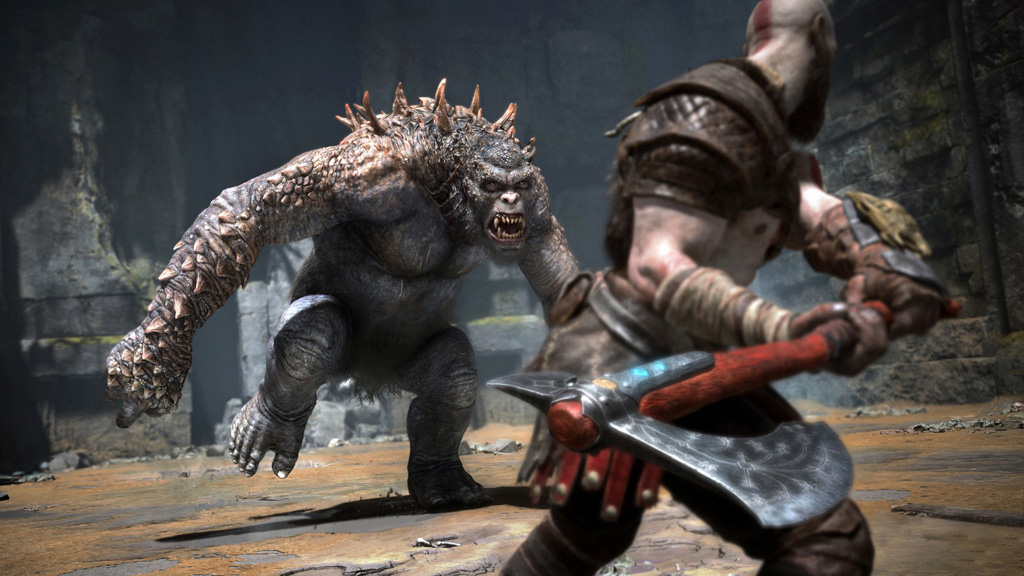
Change your range: Sitting right alongside 4K in today’s video world is high dynamic range (HDR) technology. This delivers pictures with a much wider light range than the standard dynamic range pictures we’ve been living with for decades in a bid to get the pictures we’re seeing on our screens looking closer to the way our eyes see the real world.
The Xbox One S supports HDR on some of its games, and via some of its streaming apps. The same situation applies for both the PS4 and PS4 Pro, and naturally the Xbox One X will deliver HDR too. Most people would say that HDR done well delivers more impact than 4K, especially on small screens.
The only problem is that HDR puts a lot of pressure on a TV, since it demands both much more brightness than SDR, and better contrast so that the extra brightness and deeper blacks can potentially share the screen simultaneously. In fact, HDR done badly can look worse than SDR done decently well; something to think about if you’re considering buying a very cheap TV.
Let there be light! One of the most important elements of a good HDR performance is brightness. Many movies and games target 1000 nits or so for their brightest elements, so if you have a TV less bright than that it won’t unlock HDR’s full potential. Especially in a video game environment, where graphics can be more stark in contrast terms than ‘real life’ tends to be.
It’s perfectly possible for TVs to deliver great HDR pictures without reaching 1000 nits and more of brightness. This is particularly true with OLED screens, for instance. But the darker a screen, the harder its processing is going to have to work to try and figure out how to resolve picture information in HDR areas above its capabilities.

Change your range: Sitting right alongside 4K in today’s video world is high dynamic range (HDR) technology. This delivers pictures with a much wider light range than the standard dynamic range pictures we’ve been living with for decades in a bid to get the pictures we’re seeing on our screens looking closer to the way our eyes see the real world.
The Xbox One S supports HDR on some of its games, and via some of its streaming apps. The same situation applies for both the PS4 and PS4 Pro, and naturally the Xbox One X will deliver HDR too. Most people would say that HDR done well delivers more impact than 4K, especially on small screens.
The only problem is that HDR puts a lot of pressure on a TV, since it demands both much more brightness than SDR, and better contrast so that the extra brightness and deeper blacks can potentially share the screen simultaneously. In fact, HDR done badly can look worse than SDR done decently well; something to think about if you’re considering buying a very cheap TV.
Let there be light! One of the most important elements of a good HDR performance is brightness. Many movies and games target 1000 nits or so for their brightest elements, so if you have a TV less bright than that it won’t unlock HDR’s full potential. Especially in a video game environment, where graphics can be more stark in contrast terms than ‘real life’ tends to be.
It’s perfectly possible for TVs to deliver great HDR pictures without reaching 1000 nits and more of brightness. This is particularly true with OLED screens, for instance. But the darker a screen, the harder its processing is going to have to work to try and figure out how to resolve picture information in HDR areas above its capabilities.
The chosen ones
OK, now that the essential buying advice done and you're an AV expert, let’s now pick out our selection of the best gaming TVs you can currently buy, taking in a combination of price and sheer quality.
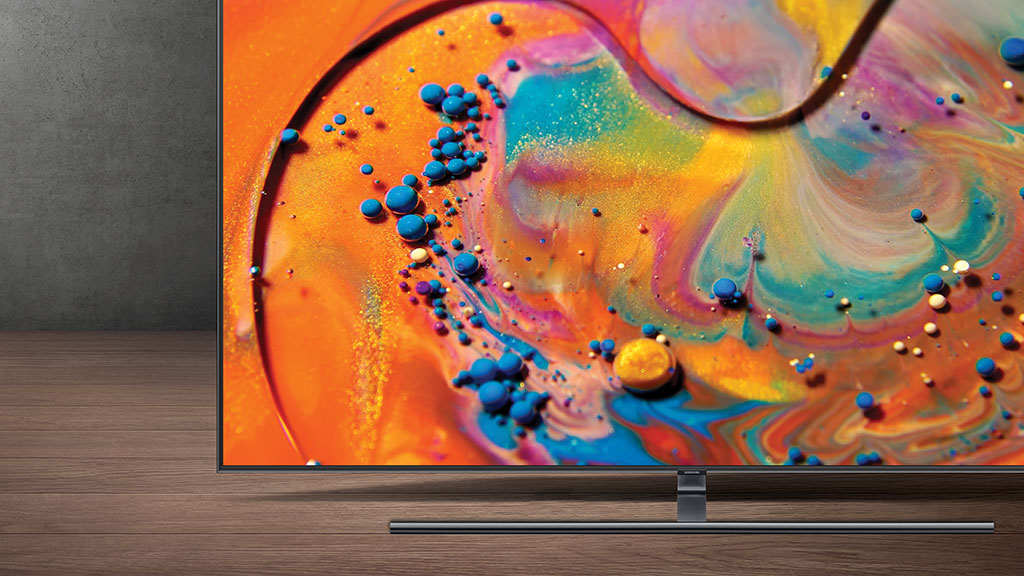
This high-end 65-inch Samsung set has a number of unique gaming-friendly advantages. For starters, unique screen filters mean that pictures are almost completely unaffected by ambient light. And trust us: being able to game in daylight and enjoy pictures that look as intense, bright and contrast rich as they do in a dark room is nothing short of a revelation. The set resolves 4K resolutions majestically too, while its heavy duty build quality enables it to produce a fairly potent and distortion-free audio performance (despite its having seemingly no visible speakers). If all that wasn’t exciting enough, the QN65Q9FAM blows out the competition with an exceptionally low 12ms of input lag when using its Game mode. That said, the QN65Q9FAM can suffer with some gentle light clouding issues during very high contrast HDR sequences, and it’s also, alas, painfully expensive.
Read the review: Samsung Q9F QLED TV


While the OLED55E7 doesn’t have nearly as much HDR-friendly brightness as the Samsung Q9F range, it’s stunning when it comes to the other end of the brightness story, delivering gorgeously rich, deep black colours completely free of the sort of clouding issues that LCD TVs suffer with. Also, while OLED can’t yet go as measurably bright as LCD, the way the darkest pixel in an OLED picture can sit right next to the brightest with no contamination between the two gives the OLED55E7’s pictures a lovely luminous quality that’s particularly effective during dark game settings.
It’s great to see, too, that LG has got input lag down to just 22ms across all source types (using its Game picture preset).
One last big attraction of the OLED55E7 is its built-in sound bar. This will soon be able to handle Dolby Atmos from the Xbox One S and Xbox One X consoles, and can produce a huge wall of bass-rich sound (provided you run it LOUD) that works brilliantly for gaming without the need for an external audio system.
Read the review: LG OLED E7

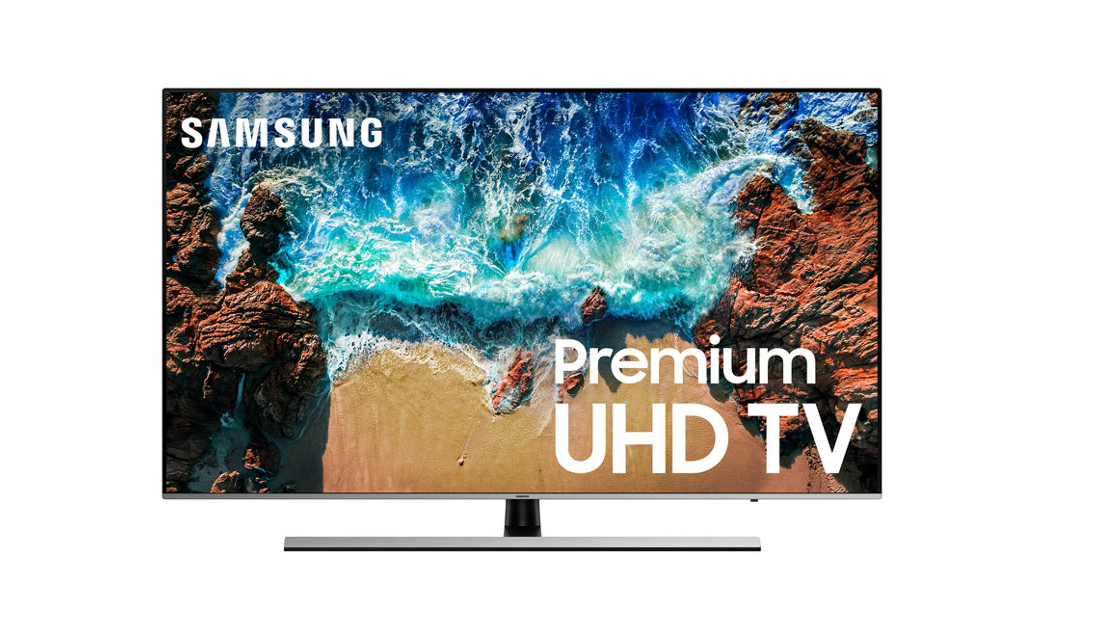
Everyone loves a high-end TV. LG’s latest OLED, Samsung’s spectacularly bright QLED and Sony’s phenomenal LED-LCDs are applauded year round for their amazing performance, picture technologies and technical prowess.
Too bad these aren’t the TVs most people buy.
If you're looking for a mid-range TV that has all the chops to play games in 4K HDR without skimping on the visuals, check out the Samsung NU8000 Series. It may not be as bright as some of the competition on this page, but give its HDR+ mode a chance, and you'd be surprised at what this underdog can do.
Read the full review: Samsung NU8000

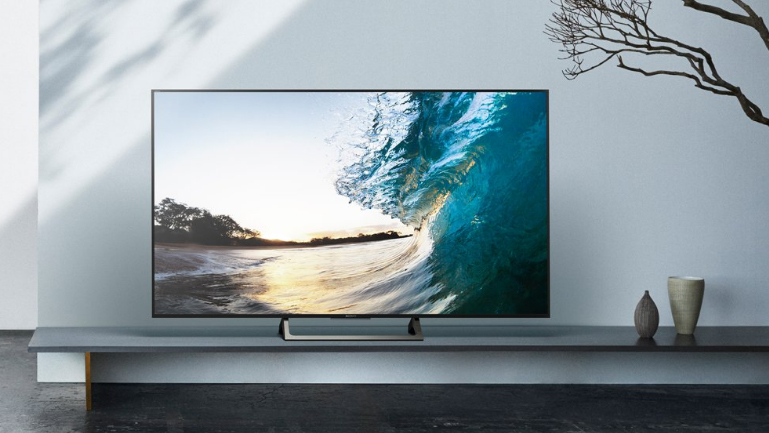
One of second-to-last recommendation for a gaming TV is another big one. This gives us the chance to raise one final issue about gaming on today’s consoles and PCs compared with previous generations: that you really have to think big if you’re going to get anything like the ultimate gaming experience.
This is partly because you need a relatively large screen to get the most from 4K resolutions, but also because the main TV brands are increasingly only building truly HDR-friendly color, contrast and brightness performances into their relatively large - and, alas, expensive - TVs.
Even a 55-inch Sony model struggles for brightness a little in its bid to make 4K HDR pictures relatively affordable. However, it does a great job with colors within that brightness limitation thanks to Sony’s Triluminos processing engine, while its black level performance is outstanding for such an affordable and edge-lit LCD model. It also only suffers with 21ms of input lag on average - though oddly, lag occasionally slips to around 50ms for a frame or two.
Read the full review: Sony XBR-X850E
A little more buying advice for the road...
If you want to learn more about shopping for gaming TVs, we've added a bit more info below. Read on to level up your AV knowledge skill!
Bits and B.O.B.s: Connected to the HDR point, you might want to think about your gaming TV’s bit depth. The best HDR experience requires a 10-bit screen able to support 1024 values of each RGB colour - otherwise you will get an inferior colour performance, including, possibly, colour striping where you should see subtle blends. Most premium HDR TVs these days are 10-bit, but it’s far from a given at the relatively affordable end of the TV market.
The Xbox One S and PS4 consoles automatically assess the bit-depth of your TV and select the optimum HDR video output accordingly. The Xbox One S even provides a description of your TV’s capabilities under 4K TV Details in its Advanced Video Settings menu. The Xbox One X will presumably do the same.
To be clear, it’s entirely possible for an 8-bit TV to deliver a good HDR colour performance if they have a strong video processing engine. But 10-bit panels certainly have an immediate advantage.
One other point to add here is that some TVs - including high-end Samsung models - actually support 12-bit colour management/processing, even though their panels are only natively 10-bit. The Xbox One S and presumably Xbox One X both provide Colour Depth boxes in their Video Fidelity settings that let you select the maximum bit performance for your particular TV.
Colour purity: Another advanced setting but important thing to consider for the ultimate gaming visuals is chroma subsampling.
This video compression term refers to a TV’s colour purity, and is usually written in such terms as 4:4:4 and 4:2:0. These numbers reveal how many pixels colour is sampled from in the top and bottom rows for every two rows of four pixels. So with 4:2:0, for instance, colour is being sampled from two pixels in the top row and no pixels in the bottom row.
From this it follows that the bigger the numbers are, the purer the color performance will be, as there’s less ‘guesstimating’ of what colors should look like. The problem is, full 4:4:4 color support requires a lot of extra image data, and so cannot be handled by the HDMI connections or processing of all TVs.
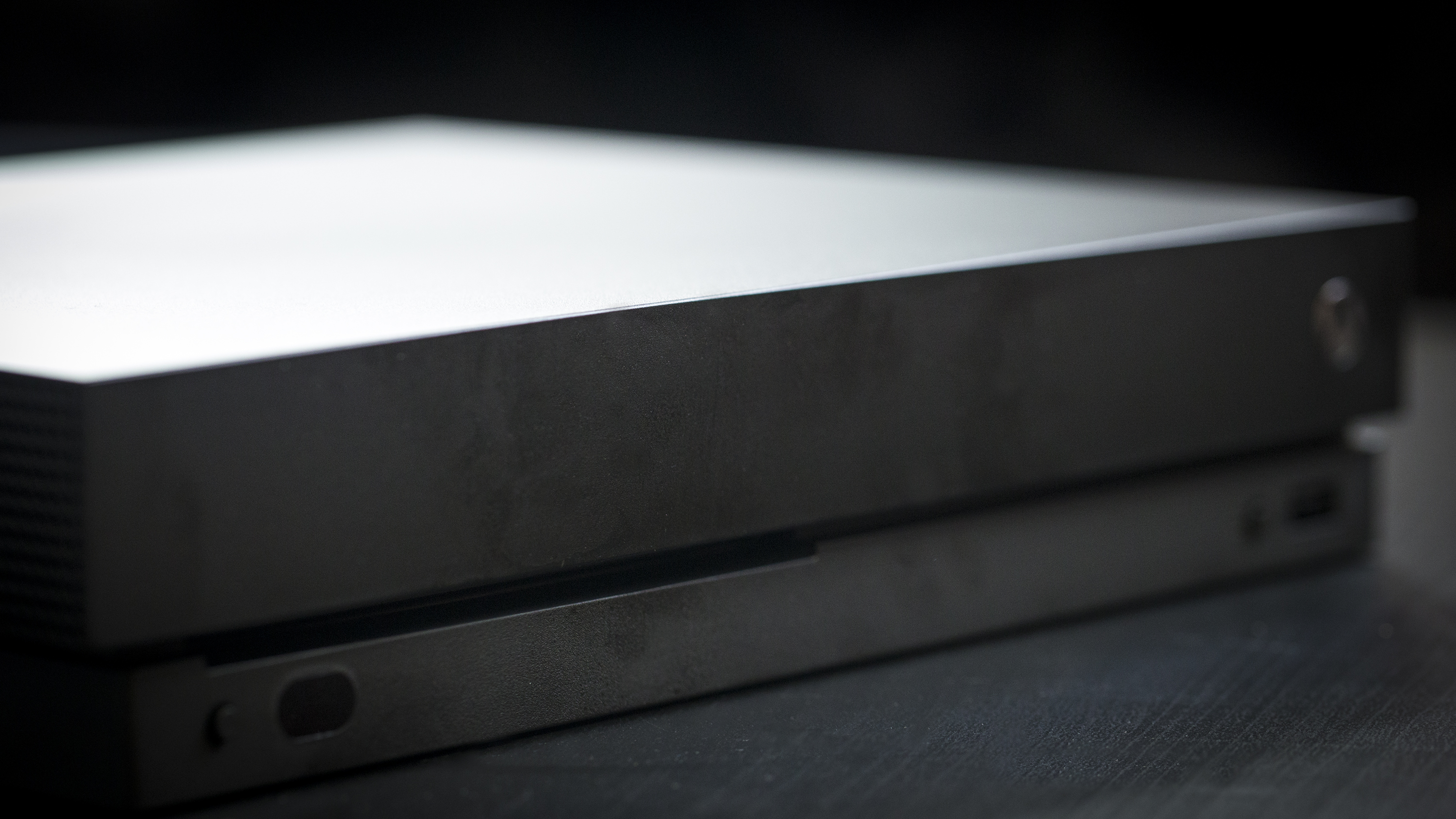
In truth, the differences in picture quality between 4:4:4 and 4:2:2 and even 4:2:0 aren’t usually enormous. They can be more pronounced with gaming graphics than video, though, so it’s worth trying to check what a TV you’re thinking of buying can support - even though it’s not information regularly carried in TV spec lists. The latest consoles are pretty good at detecting the optimum chroma subsampling a TV can support, automatically adjusting their outputs according.
It’s something that can cause annoying ‘handshaking’ issues with some TVs, though, so both the Xbox One S and PS4 Pro now provide subsampling ‘limiter’ options in their video output menus (‘Enable 4:2:2’ on the Xbox One S, and 2160 YUV4:2:0 on the PS4 Pro).
Frame rate handling: Now that the Xbox One X is almost here and promising native 4K resolution games running at 60 frames a second, make sure that whatever TV you buy has the latest specification HDMI sockets. If it doesn’t have at least one HDMI socket built to the v2.0a specification, it won’t be able to receive 4K resolution at anything higher than 30 frames a second.
Fortunately far more of this year’s 4K TVs do feature HDMI 2.0a sockets than in previous years, but it’s still something that’s worth double checking - especially if you’re buying a particularly cheap TV.
Now you know everything there is to know about gaming TVs!
Contributer : Techradar - All the latest technology news https://ift.tt/2HOwCr3

 Reviewed by mimisabreena
on
Friday, May 04, 2018
Rating:
Reviewed by mimisabreena
on
Friday, May 04, 2018
Rating:














No comments:
Post a Comment